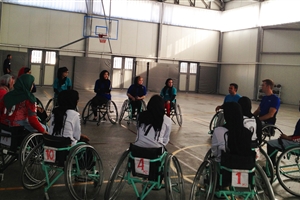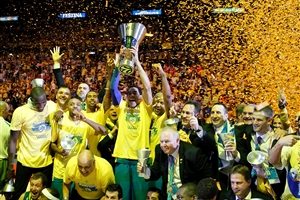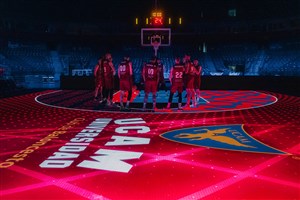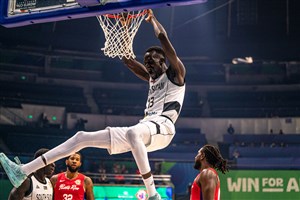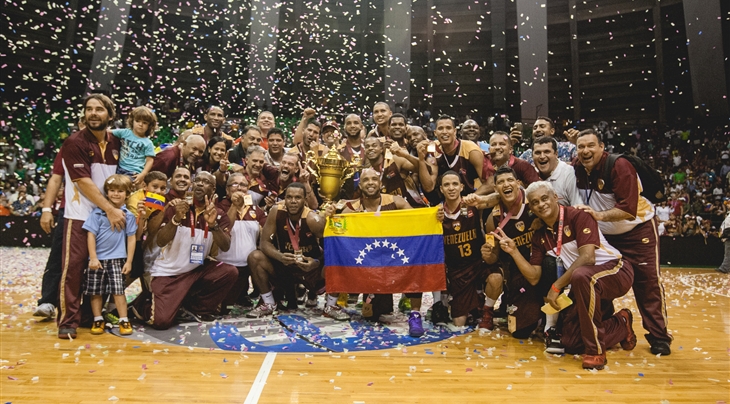
The Best of Basketball in the Americas in 2014 - Part 2
SAN JUAN (William Rosario's Somewhere in the Americas) - Last week, I had intended to do a single column on the best moments of basketball in the Americas in 2014. It was simply not enough. We had some great events this year at every level.
I'll start this second part by talking about the most traditional and oldest championship in the history of basketball: the South American Championship. Like I said back when I wrote about it in July, it sound like a hyperbolic phrase when you write the most of anything in the history of basketball. But it is true.
The South American Championship had its first edition in 1930 (two years before FIBA was even founded) and has been played uninterrupted ever since, with this being the 47th edition of the tournament.
The first edition was played in Montevideo, Uruguay, with the host winning the gold medal against Argentina. Brazil came in third. And those three have basically been the key players in the consequent 84 years of the competition. Not in 2014 though. This was to be Venezuela's year.
The team, that had some ups and downs hosting the 2012 FIBA Olympic Qualifying Tournament and the 2013 FIBA Americas Championship, believed the third opportunity to be the home team would be theirs and so they played in Isla de Margarita in front of a packed 8,000 seat arena that roared with every basket from the Greivis Vasquez-led squad.
There were some amazing moments for them against Brasil, being down and out with a couple minutes to go and coming back in the semifinals, and against Argentina, with their head coach Nestor "Che" Garcia electing to sit Vasquez through most of the third and fourth quarter in their way to the gold medal victory. In that final game, there were more than three thousand spectators watching the game on a screen outside of the arena. Truly electric.
The FIBA Americas U18 Women's Championship provided a nice moment for another South American team when Argentina won the bronze medal in Colorado Springs against Brazil. It was another showcase tournament for the dominating USA Women's youth team for which A'ja Wilson was simply the star of the tournament ending up leading the championship in points (19.0) and blocks (2.0), while averaging a little more than eight rebounds per game. The USA won the gold against Canada 104-74.
But the big moment of the championship came when the Argentineans with a run in the opening minutes of the fourth quarter defeated their eternal rivals from Brazil, winning a bronze medal in an emotional post-game celebration that was full of tears and joy. It was one of those great wire-to-wire exciting games, great victory and another chapter to the already gigantic Argentina v Brazil sports history book - this time in the women's youth basketball realm.
The Brazilians would get their revenge though, and on the biggest stage of them all. It was the FIBA Basketball World Cup and both Argentina and Brazil made it to the Quarter-Finals where they had to play themselves in a win or go home scenario. Brazil won it 85-65 in part due to a great performance from the young point guard Raulzinho that crystalized what we had all being seeing for the first week of the World Cup: Argentina overachieved in the first round, but this was their clear swan song and it wasn't going to end with them on top. Without Manu Ginobili and with a team that was older and short on the reserves side of it, Argentina needed a miracle and Brazil was simply more that night.
The FIBA Basketball World Cup functioned as kind of a mirage for the national teams in the Americas. When the smoke cleared in the Group Phase, five of the six teams had made it trough to the second round and that seemed like celebration enough for them, so they did not last that long thereafter.
Argentina, the Dominican Republic and Mexico went out in the Round of 16, while Brazil had a good championship that ended horribly in the Quarter-Finals in a very disappointing lost against Serbia. Only the USA remained.
And they were certainly the big story of this basketball year in the Americas. This was a World Cup that seemed doomed for a US team that lost Kevin Love and Blake Griffin before training camp, Kevin Durant in the middle of it due to exhaustion and Paul George in a tragic injury, all prior to arriving in Spain. This was the year they were supposed to go back to losing. In the end it might end up being the most impressive performance of them all.
Coach K adjusted and brought to the World Cup a hungry, young and athletic roster that took the "Spain is going to beat them" thing personally. They wanted to win every possession. They fought and did not give an inch. The Final sealed it for everybody. Everybody in the stadium in those first five minutes of the game was in awe of Milos Teodosic and what he was able to do in the court. Then came the time-out, Kyrie Irving took it personally and just before anybody could make sense of it, the game was over.
The USA women were equally impressive. They were undefeated and never really tested throughout the FIBA World Championship for Women shooting over 54% from the field. With three players averaging double figures in scoring and with a suffocating defense, they did it what they were expected to do. So that was that. In both men's and women's basketball, the USA at the moment have no competition. The results prove it.
The Intercontinental Cup was a highlight moment for basketball in the Americas in 2014. Flamengo finally did it. They played in the HSBC Arena in front of a crowd of more than 13,000 and defeated Turkish Airlines Euroleague winners Maccabi Tel-Aviv to become the Intercontinental champs. The crowd could not contain itself and rushed the court in a celebration that was beautiful to watch. To see so many people, Brazilians, excited about a basketball win meant everything. Both the NBB league and the Liga de las Americas arrived in that moment when Marcelihno Machado lifted the cup. It was real.
The Sudamericana closed the show in 2014 and it was the Bauru domination tour. They actually did it like the USA at Spain 2014. They had the best talent and the best defense, so nobody could compete with them. In the end they won the championship with an average margin of victory of 21.3 points per game, prevailing in their Final Four games by 46 and 26 points respectively in front of their home crowd. Still exciting for a team that had worked and dreamt of this kind of international title for a long time.
So I come back to this being a year where the Americas had the Liga de las Americas Final Four in front of a full 10,000 seater arena, the Centrobasket in front of a full 10,000 plus arena, the South American Championship in front of a sellout 8,000 arena with more than 3,000 outside watching the game on a screen, an Argentinean crowd that was the talk of Sevilla at the World Cup, and the Intercontinental Cup in front of a full 13,000 plus arena…and I know why 2014 feels so great.
This was truly a year for the fan. Basketball in the Americas was really out there man.
William Rosario
FIBA
FIBA's columnists write on a wide range of topics relating to basketball that are of interest to them. The opinions they express are their own and in no way reflect those of FIBA.
FIBA takes no responsibility and gives no guarantees, warranties or representations, implied or otherwise, for the content or accuracy of the content and opinion expressed in the above article.
